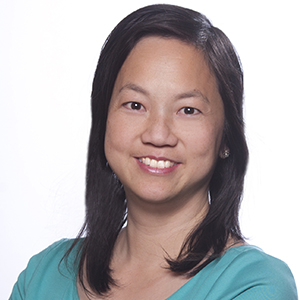How to Reduce Unintended Teenage Pregnancies

by Sophia Yen, M.D.
May is National Teen Pregnancy Prevention Month. As a pediatrician with a focus on adolescent medicine, my goal in life is to make sure that all teens have access to comprehensive sexuality education (“abstinence plus” vs. “abstinence only”) and confidential reproductive health care.
Here are a few steps we all need to take to ensure every teen has a bright future, in addition to specific steps you can take as a parent to help keep your kids healthy and safe.
What Can We Do?
We need to inspire the next generation so they will study hard and be too busy to get into trouble.
Here are some great resources for inspiring teens:
All ages:
- A Mighty Girl: A collection of books, toys and movies for smart, confident, and courageous girls.
- Ted Talks: Powerful talks to spread ideas and inspire new ones –for boys and girls.
3rd-8th graders:
- She Heroes: A non-profit that produces and distributes educational videos and content that empowers girls to dream big, explore their interests, and passionately pursue any career.
For high school students:
- Makers: A video collection of inspirational women’s stories.
- Teen Ink: A website created by teens for teens – the site offers teens the opportunity to publish their creative work and opinions on issues that affect their lives.
We need to provide comprehensive sexuality education, not “abstinence-only.”
From the 2013 national Youth Risk Behavior Survey (YRBS), 30% of high school freshmen, 41% of sophomores, 54% of juniors and 64% of seniors have had sexual intercourse. Thus, 1 out of 10 high school students convert from virgin to non-virgin each year. That is why it is important that we teach all high school students and perhaps start earlier talking with them about birth control.
From 1996-2010, our government spent more than $1.5 billion on abstinence-only-until-marriage programs, “despite an overwhelming body of research proving they are ineffective and that this federal expenditure has failed to achieve its stated goals.”
The 2013 Youth Risk-Based Surveillance System (YRBSS), a national survey that monitors health-risk behaviors among youth, showed that among U.S. high school students:
- Among those who were sexually active, 41% did not use a condom during last sexual intercourse.
- 14% did not use any method to prevent pregnancy during last sexual intercourse.
Additionally, out of all U.S. high schools:
- Only 58% taught methods of contraception in a required health education course.
- Only 5% made condoms available at school.
Comprehensive sexuality education teaches abstinence plus all the contraceptive methods and is supported by the American Academy of Pediatrics. Testifying in front of Congress, Margaret A. Blythe, MD, FAAP, FSAM said, “Learning about safer sex does not prompt teens to become sexually active at a younger age, more often or with more partners.”
Birth Control should be free and easily accessible
This applies to anyone but especially for teenagers.
Would you rather pay for birth control or a teenage pregnancy/abortion? In 2009, the Colorado Family Planning Initiative gave long-acting reversible contraceptives (LARCs) to low-income women including teenagers.
The result: decreased teen birth rate by 40% and 35% decrease in teen abortion rates. The state saved an estimated $5.85 for every dollar spent on the program. Now lawmakers want to end it.
So, what can you do as a parent?
Make sure your kids have goals/expectations and inspiration to be all that they can be.
Make sure your school has sexuality education.
It should be evidence-based, comprehensive sexuality education and not just “abstinence-only-until-marriage.” Make sure your school administrators know this is a priority for you and your peer parents. Use some of the statistics above on the importance of comprehensive sexuality education to make your point.
Talk to your kids about birth control and sex starting at 8th grade or sooner.
Check out the Talk With Your Kids Timeline + Tips for some guidelines. Other ice breaker ideas: have a copy of Our Bodies OurSelves, or watch East Los High (a soap opera about high school students covering lots of pertinent topics including sex, teen parenting, and dating.) It’s available for free on Hulu.
If you don’t feel comfortable or knowledgeable, then make sure your son/daughter has access to someone who is by visiting an Adolescent Medicine specialist, pediatrician, family practice MD, Planned Parenthood, or another trusted adult.
Get informed on the different birth control methods.
Know what is available and how well each method works so that you can help your teen choose the method that is right for them.





